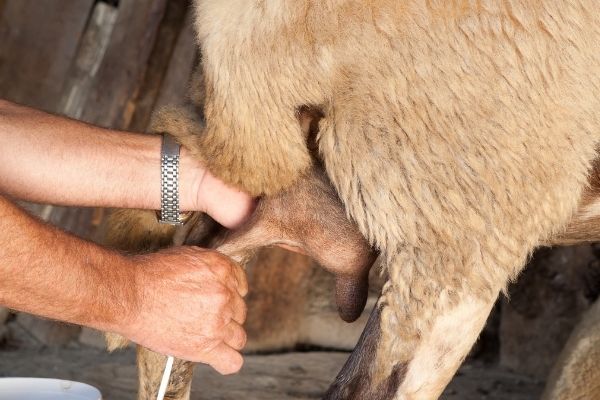When a person thinks of milk, it's highly unlikely that they think of sheep. Most people would also assume that milking a sheep might be a challenging task. Well, the fact is that sheep are one of the most significant sources of milk out there and are probably easier to milk than some of the other dairy animals primarily because of their size!
Dairy sheep can be milked with little to no effort at all. To milk a sheep, it would be ideal that the sheep is in stanchion or a stand, and has some grains to feed on to keep it distracted. Keep it held in place by a headgate or a rope. With the sheep happily feeding and secured in place, you can then squeeze the milk out of the udders.
Sheep has smaller teats so with a bit of practice and some helpful information, you'll be getting the hang of it in no time. To make the process of sheep milking much more effortless, let us look at some of the other things you might want to know about milking a sheep.
How long does it take to milk a sheep?
The entire process can take about ten minutes to a little under half an hour for each sheep. Some udders are harder to work with than others. That's why it would be ideal if you had a stool to sit on to avoid strain on your back.

The sheep are usually milked from behind rather than from the side. Because their udders are far behind between their legs, milking from behind makes the teats more accessible.
Your milking pot or bucket should also have a strainer to prevent any debris or dust from getting into the milk while you are milking.
The actual time it takes to milk a sheep varies between the methods you're using.
Milking Sheep With Your Hands
Experienced dairy farmers can milk a sheep in 10 minutes with their hands. Of course, it could take longer or shorter depending on the sheep you're dealing with. As a result, dairy farmers tend to be very patient people.
With a Milking Machine
Milking a sheep could go much faster if you have a milking machine. This way is more efficient and saves you a lot of time, especially if you're dealing with a lot of sheep. A reliable milking machine can get a sheep milked in just a few minutes. That being said, you have to be cautious to get the right-sized machine that does not cause your sheep any harm.
Best Practices in Sheep Milking
As with all dairy animals, keeping the sheep happy and healthy is the key to getting a lot of quality milk. You would want to make sure that you're doing everything you can to ensure you get the most milk possible and leaving enough for the lambs to get proper nourishment. It is always good to have a system set up that lets you milk efficiently but does not place any stress on the sheep.
Here are some of the best practices to make milking a sheep as easy and efficient as possible:
How Many Times in a Day Do Sheep Need to be Milked?
Ewes can be milked twice a day and can produce up to 1 liter of milk. Sheep are ready to give milk about 1-2 weeks after the birth of their babies. Some days will yield more milk than others, though. Sheep tend to go through a 220-to-240-day lactation cycle.
Still, the experienced farmers do not milk their sheep for the entire lactation period and reserve some days for the sheep to feed their lambs. This is very important as sheep's milk has the ability to stimulate growth and development in their children — strengthening their bones and reinforcing their immune systems to become healthy adults one day.
You'll need to work out a schedule for this cycle to give lambs the nourishment they need to become the next generation of dairy milk producers.
Final Words
Sheep milking is a fun and highly rewarding job when done right, and we hope you realize that it is a straightforward process. Understanding the basics of sheep milking is very important. Hand Milking is a time-consuming task, especially if you have a large flock of sheep. Milking machines can make milking very easy, but they need to be operated very carefully to avoid any injury to the sheep. Rapid exit milking parlors can be an excellent option for sizeable dairy sheep operations. We hope that this article could dispel some of the misconceptions you might have about milking dairy sheep. Happy milking!
Sources:
Understanding mastitis in sheep
Best Milking Practices for Small-scale Dairies | Whatcom Ag Monthly | Washington State University
